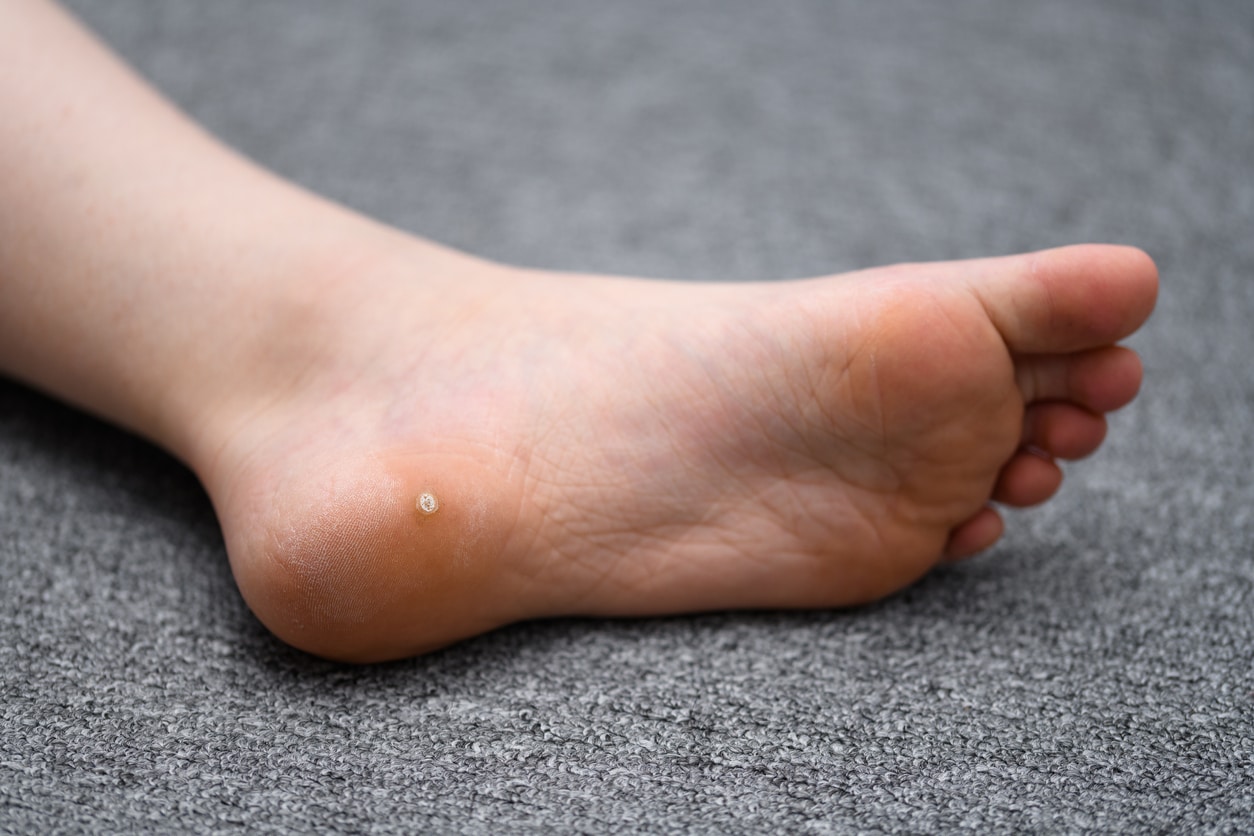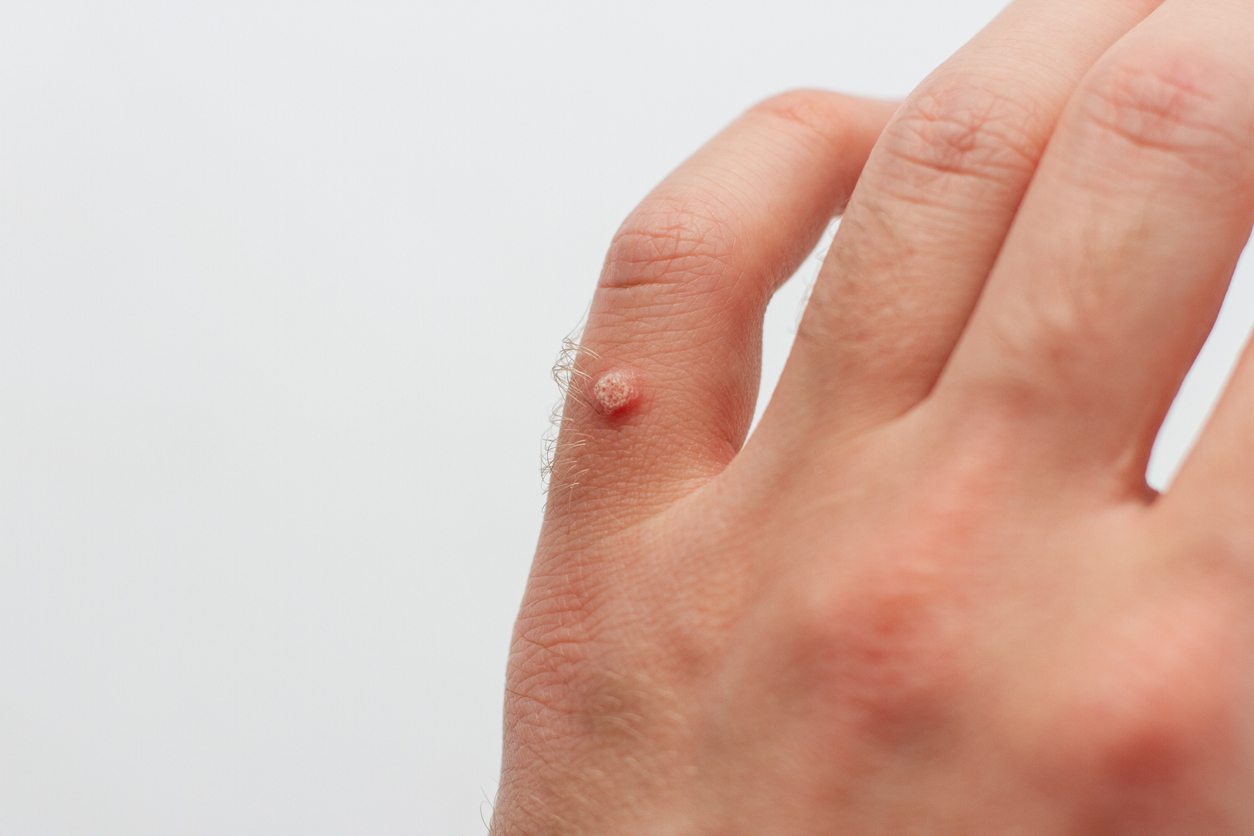Warts
Dermatologist in Dallas, TX
Warts are a very common skin condition. They aren’t usually dangerous but they are contagious and can be painful or embarrassing. The American Academy of Dermatology Association (AADA) defines warts as benign (not cancerous) skin growths that appear when a human papillomavirus (HPV) infects the top layer of the skin. You are more likely to get one of these viruses if you cut or damage your skin.
Symptoms
There are different types of warts, appearing in different areas of the body and exhibiting certain signs and characteristics. The five major types of warts are common warts, plantar warts, flat warts, filiform warts, and periungual warts.
- Common Warts – These grow most often on the fingers, around the nails, and on the backs of the hands and where skin was broken. These can have black dots that look like seeds and most often feel like rough bumps.
- Plantar Warts – These grow most often on the soles of the feet and can grow in clusters. They are often flat or grow inward and can hurt, feeling like you have pebbles in your shoe. Like common warts, they can have black dots.
- Flat Warts – These can occur anywhere. Children usually get them on the face, men get these most often in the beard area, and women tend to get them on their legs. Flat warts are smaller and smoother than other warts but they tend to grow in large numbers — 20 to 100 at a time!
- Filiform Warts – These often grow quickly and look like long threads or thin fingers that stick out. They often grow on the face around the mouth, eyes, and nose.
- Periungual Warts – These grow under and around the toenails or fingernails. They can be painful and affect nail growth.


Causes
As mentioned before, warts are caused by the human papillomavirus (HPV). Most forms of HPV are spread through shared objects like towels or sheets. The virus generally spreads through cuts, scrapes, or other breaks in your skin including hangnails. Biting your nails can also spread the virus from one finger to another.
Treatment
Warts often go away on their own but some can be painful or persistent. There are a few over-the-counter treatments you can try at home such as freezing treatments and salicylic acid patches. Don’t try to treat warts at home if they are on your face or other sensitive parts of the body. You also should not treat warts on your feet if you have diabetes. Please contact your dermatologists for treatment in these cases.
If your warts do not respond to at-home treatments, your dermatologist may be able to help. According to the AADA, dermatologists can treat warts in multiple ways including:
- Cantharidin
- Cryotherapy
- Electrosurgery and curettage
- Excision
If the warts are hard to treat, your dermatologist may use one of these treatment methods:
- Laser Treatment
- Chemical Peels
- Bleomycin
- Immunotherapy
Prevention
There is no cure for warts, but you can take several steps to help prevent them. To reduce the risk of warts, avoid direct contact with warts and wash your hands regularly. Wear flip-flops in locker rooms and showers. To reduce the spreading of them, cover warts with a bandage. You should be careful when brushing hair, clipping nails, or shaving in areas that have warts. You should also avoid picking at warts because this can spread the virus to other parts of the body.
